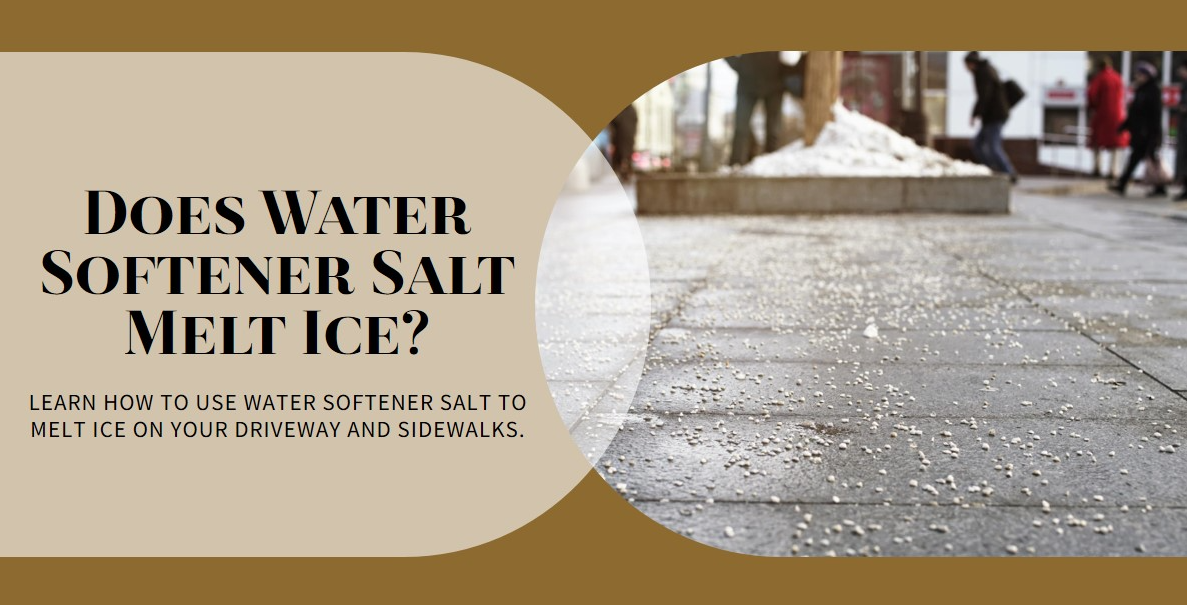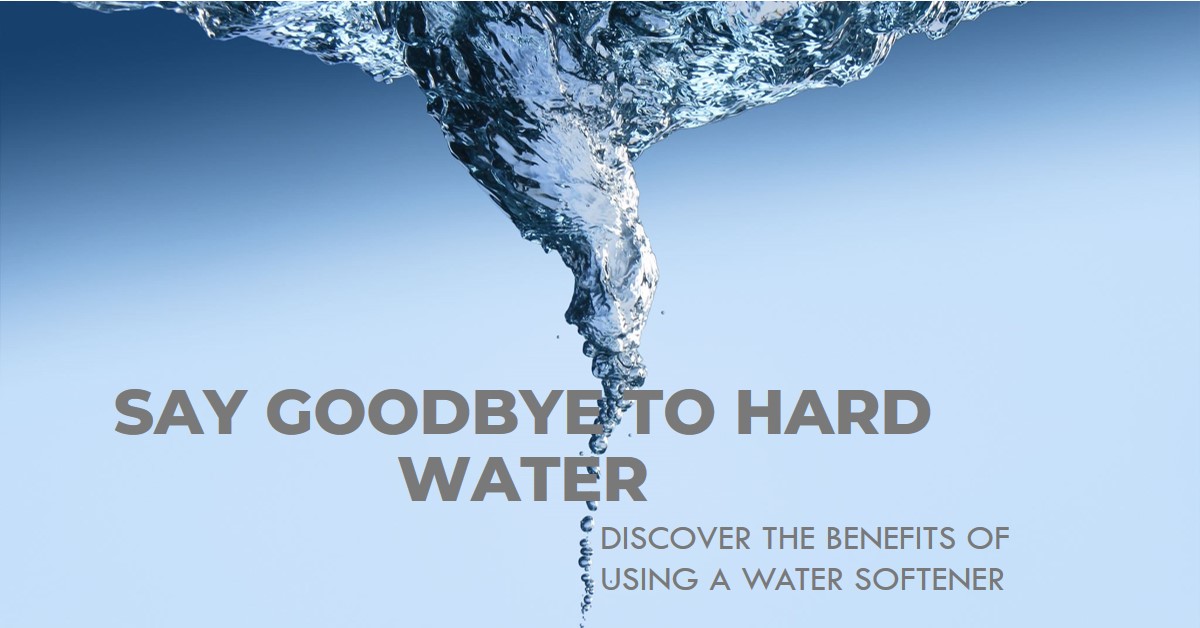Water softener salt, also known as sodium chloride, is commonly used to treat hard water in households and businesses. But can it also be used to melt ice on driveways, sidewalks, and other surfaces? Here’s a comprehensive look at using water softener salt as a de-icer.
How Water Softener Salt Works to Melt Ice
Water softener salt is effective at lowering the freezing point of water and causing ice to melt. Here’s a brief overview of how it works:
- Water softener salt is composed of sodium and chloride ions that easily dissociate in water.
- When salt dissolves in water, the sodium and chloride ions interfere with water molecule bonding. This prevents the water molecules from organizing into rigid ice crystals.
- By disrupting the water molecule structure, the dissolved salt makes it more difficult for ice to form and easier for any existing ice to melt.
- Salt causes ice to melt by lowering its freezing point. The more concentrated the salt solution, the lower the freezing point becomes.
So in essence, spreading water softener salt on ice introduces a salt solution that makes it harder for the ice to remain solid. The ice absorbs the salty water and melts.
Effectiveness of Water Softener Salt for Ice Removal
Water softener salt can be effective for melting ice on outdoor surfaces. However, it is generally less efficient than traditional ice melting products for a few reasons:
- Lower salt content – Water softener salt only contains up to 99% sodium chloride. Typical de-icers contain between 95-99% sodium chloride plus an added anti-caking agent.
- Larger grain size – The grain size of water softener salt is often larger than typical ice melt. This means it dissolves more slowly.
- Not optimized for ice melting – Purpose-made de-icers are optimized to penetrate ice and snow as efficiently as possible.
- Less temperature tolerance – Water softener salt stops working at around +5°F. De-icer can melt down to -15°F or lower.
So while water softener salt will get the job done, you may need to use more product compared to commercial ice melters formulated specifically for freezing temperatures. It also may not work once temperatures dip below +5°F.
How Much Water Softener Salt to Use on Ice
If using water softener salt to melt ice, use approximately 1/2 to 1 cup per square yard. Apply it evenly across the surface.
The actual amount required depends on several factors:
- Ice thickness – More salt is needed for thicker ice layers. For ice over 1 inch thick, apply salt repeatedly in layers.
- Temperature – Salt melts ice slower at lower temperatures. More salt is required when it’s very cold out.
- Surface area – Calculate the exact area that requires salt so you don’t under-apply.
- Sunlight – Salt works faster in sunlight vs shade. Reduce the amount applied if sunny.
- Salt concentration – Read the package to confirm the sodium chloride concentration. Use more for lower concentration salts.
Start with 1/2 cup per square yard and re-apply as needed. Monitor high traffic areas and re-apply salt promptly after it dissolves to prevent refreezing.
Applying Water Softener Salt to Melt Ice
Follow these tips when using water softener salt as an ice melt:
- Spread salt evenly across the surface using a broadcast spreader or by hand. Avoid piling it in mounds.
- Apply extra salt in high traffic areas prone to refreezing and compacted snow.
- Apply during daylight hours so the sun can assist with melting.
- Re-apply salt as needed after it dissolves to prevent ice from reforming.
- Focus on treating icy patches. Avoid excessive use on clear pavement.
- Read the packaging label and use according to the manufacturer’s instructions.
- Remove slush and water after the ice melts to prevent refreezing.
- Rinse concrete surfaces after the ice melts to prevent salt residue build-up.
Using water softener salt properly is key to achieving the best ice melting results. Be sure to apply it evenly at the proper rates.
Is Water Softener Salt Safe for Concrete?
Water softener salt, like any salt, can potentially damage concrete surfaces when used as a de-icer. Here are some tips on using it safely on concrete:
- Always pre-wet concrete before applying water softener salt. This helps prevent the salt from pulling moisture out of the concrete.
- Use the lowest effective amount of salt needed to get the job done. Avoid excessive application.
- Rinse concrete with water after the ice melts to wash away salt residue.
- Regularly apply concrete sealers to help protect the surface from salt damage over time.
- Switch to a concrete-safe ice melt formula if using water softener salt frequently or for commercial use.
With proper pre-treatment and maintenance, concrete can handle occasional water softener salt use. But for heavy-duty ice removal, a concrete-formulated product is a safer choice long-term.
Is Water Softener Salt Safe for Pets?
Water softener salt can potentially irritate pets’ paws and be dangerous if ingested, just like regular ice melting salt. Here are some pet safety tips:
- Wipe pets’ paws after outdoor walks to remove any salt residue.
- Avoid excessive salt application in pet frequented areas of the yard.
- Opt for a pet-safe de-icer formula labeled as non-toxic for pets.
- Prevent pets from licking salt residue on their paws or the ground.
- Clean up any excess salt once the ice has melted.
- Consult your vet if your pet shows signs of irritation or illness after exposure to softened water salt.
While water softener salt won’t necessarily poison pets instantly, it’s best to use it carefully around outdoor pets to avoid irritation. There are less abrasive de-icing options better suited for homes with pets.
Alternatives to Using Water Softener Salt for Ice
While water softener salt works in a pinch, the following alternatives are often better options for melting ice:
- Rock salt – This inexpensive mineral salt contains over 95% sodium chloride. It’s purpose-made for de-icing.
- Calcium chloride – Works down to -25°F. Less harmul to concrete but corrosive to metal.
- Magnesium chloride – Derived from sea water. Won’t damage concrete and more eco-friendly.
- Potassium chloride – Contains potassium rather than sodium. Less harmful to pets and plants.
- Sand or kitty litter – Provides traction on ice without chemicals. Won’t melt ice though.
- De-icing liquids – Liquid de-icers like calcium magnesium acetate are effective and eco-friendly.
- Ice melt blends – Look for formulas containing a blend of salts for versatility in any temperature.
For most residential users, a basic rock salt de-icer or ice melt blend will get the job done effectively and affordably all winter long without the hassle of using water softener salt. Consider an eco-friendly formula if concerned about concrete damage, pets, or the environment.
Using Water Softener Salt Safely and Effectively
Water softener salt certainly melts ice in a pinch. But it’s not optimized for that purpose. With a few precautions, you can safely apply water softener salt on residential icy patches:
- Read packaging instructions and only apply as directed.
- Wear gloves and wash skin after use to avoid irritation.
- Pre-wet concrete before applying. Rinse after ice melts.
- Sweep up excess salt once icy areas clear.
- Limit use around pets. Opt for a pet-safe ice melt if needed regularly.
- Switch to a higher performance ice melt product for heavy ice storms.
- Consider eco-friendly magnesium and potassium blends to minimize concrete and environmental impact.
The convenience of using what’s already on hand can’t be beat. But if dealing with frequent winter ice, invest in a good quality ice melt product that’s made for the task at hand.
The Bottom Line
Water softener salt does effectively lower the freezing point of water, causing ice to melt. However, plain sodium chloride salts aren’t optimized to penetrate ice and melt down to lower temperatures like purpose-made de-icers. Water softener salt works fine for occasional ice in warmer weather. But frequent winter use on sidewalks, driveways and roads calls for a more heavy-duty ice melting product to do the most efficient job. With care taken to prevent concrete damage and protect pets, water softener salt can be used in a pinch to melt small patches of ice in areas like a home entryway or front steps.




